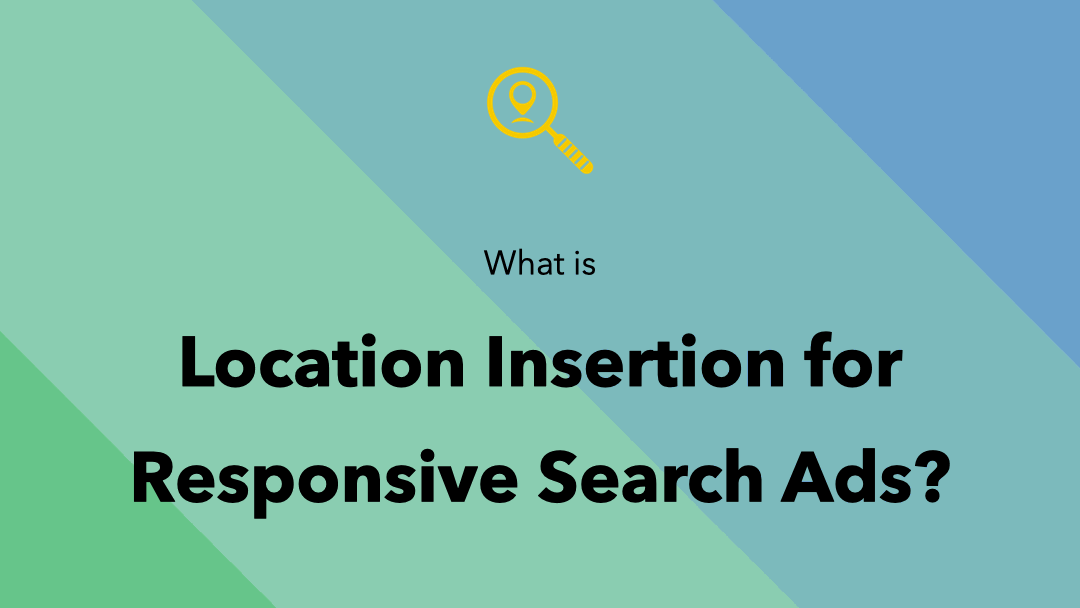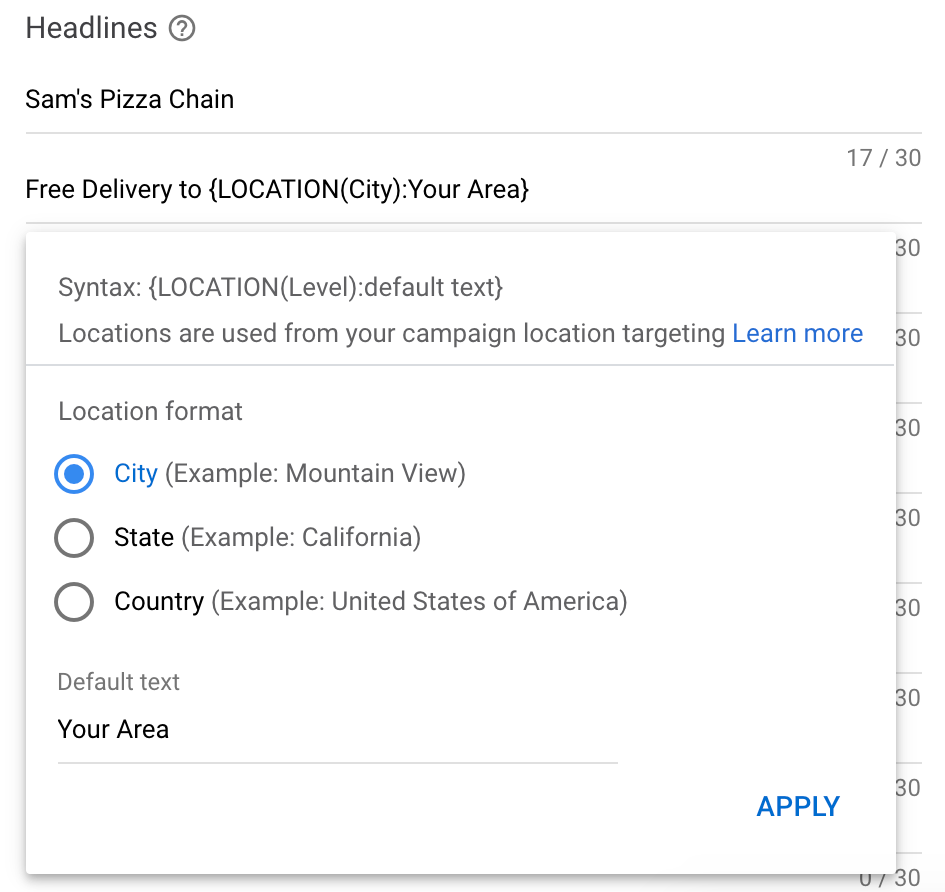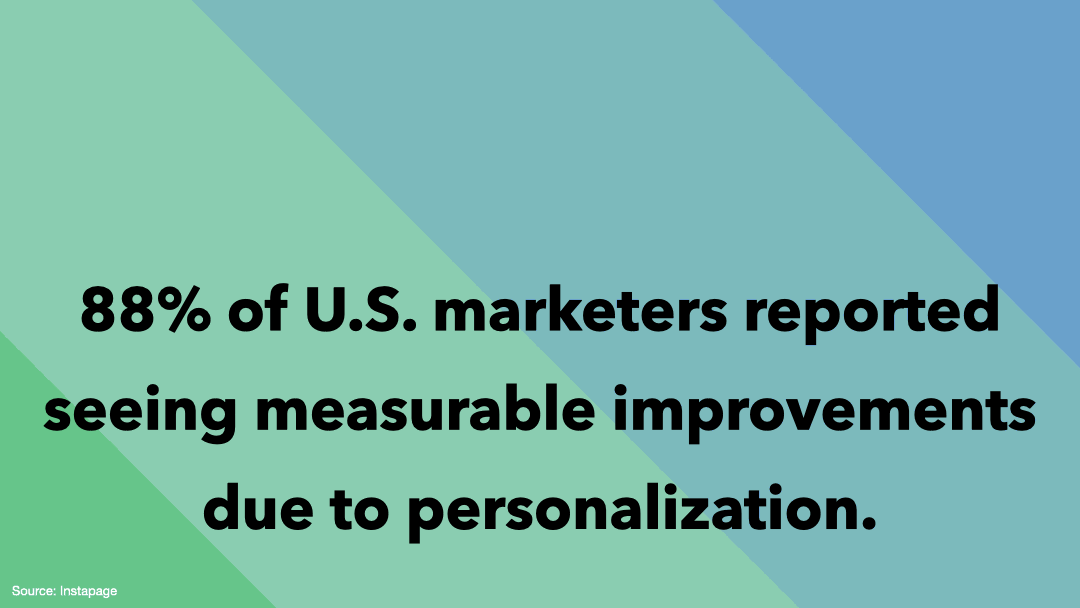Google Ads recently launched location insertion for responsive search ads. Available now for advertisers to use, this feature allows for more personalized ad copy without the backend work of ad customizer uploads.

What is Location Insertion for RSAs?
Location insertion is a new feature for responsive search ads that dynamically displays a user’s location directly in the ad text.
Based on your campaign’s location targeting, location insertions can showcase the city, state or country of a user in order to make the ad as relevant as possible to your target audience.
As shown in the examples below, location insertion can be used in headlines, descriptions or both.


This new feature can be helpful for companies with multiple locations or a large service area. Additionally, businesses who operate exclusively or predominantly online can benefit from location insertion, such as companies advertising freelance services, telehealth and more.
By using location insertions, your ad becomes increasingly relevant and personalized, which is likely to resonate with consumers. As a result, it has the potential to improve click through rate (CTR) and drive more qualified and engaged traffic to your site.
How to Use Location Insertion
To implement location insertion:
- Create a new responsive search ad, or click to edit an existing RSA
- In your ad text, enter a bracket ( { )
- Click on “Location Insertion”
- A small box will pop up
- Select which type of location you want to highlight: City, State or Country
- Enter default text, which will show up in case a specific location can’t be displayed
- Click Apply
The example below depicts the dropdown box where you will specify the settings of your location insertion.

Location Insertion vs. Ad Customizers
Advertisers have been able to showcase specific locations in ads for some time now by using ad customizers. However, location insertion works differently and has some unique advantages.
The key difference between location insertion and ad customizers is that with location insertion, advertisers don’t have to create ad customizer data. Instead of pulling from a data feed, location insertions draw from the campaign’s location targeting to dynamically populate the city, state or country of a user.
As a result, you don’t have to format and upload spreadsheets featuring location information into the account’s data feed. Furthermore, you don’t have to add or remove rows on an ad customizer spreadsheet every time you change your location targeting.
Thus, location insertion reduces manual work and is much more scalable than dealing with ad customizer feeds.
However, because location insertion is currently available only in responsive search ads, other ad formats that rely on ad customizers will have to continue using that method – for now, at least.

Should I Use Location Insertion in My Account?
Businesses with a single location or a small service area may not have a need for this feature. However, other advertisers should consider using location insertion for several reasons.
For instance, location insertion allows for easier customization of ads. This customization, in turn, creates a more personalized experience for the user.
In an online marketplace where consumers expect personalization, this new capability can offer advertisers a competitive advantage.
Advertisers can also consider A/B testing location insertions to measure impact on CTR, website engagement and conversion rate. Depending on your campaign structure, it may make sense to test this feature in a specific market, or go ahead and apply it account-wide.
For help implementing location insertions or managing other aspects of your Google Ads account, contact Creative Website Marketing today.

